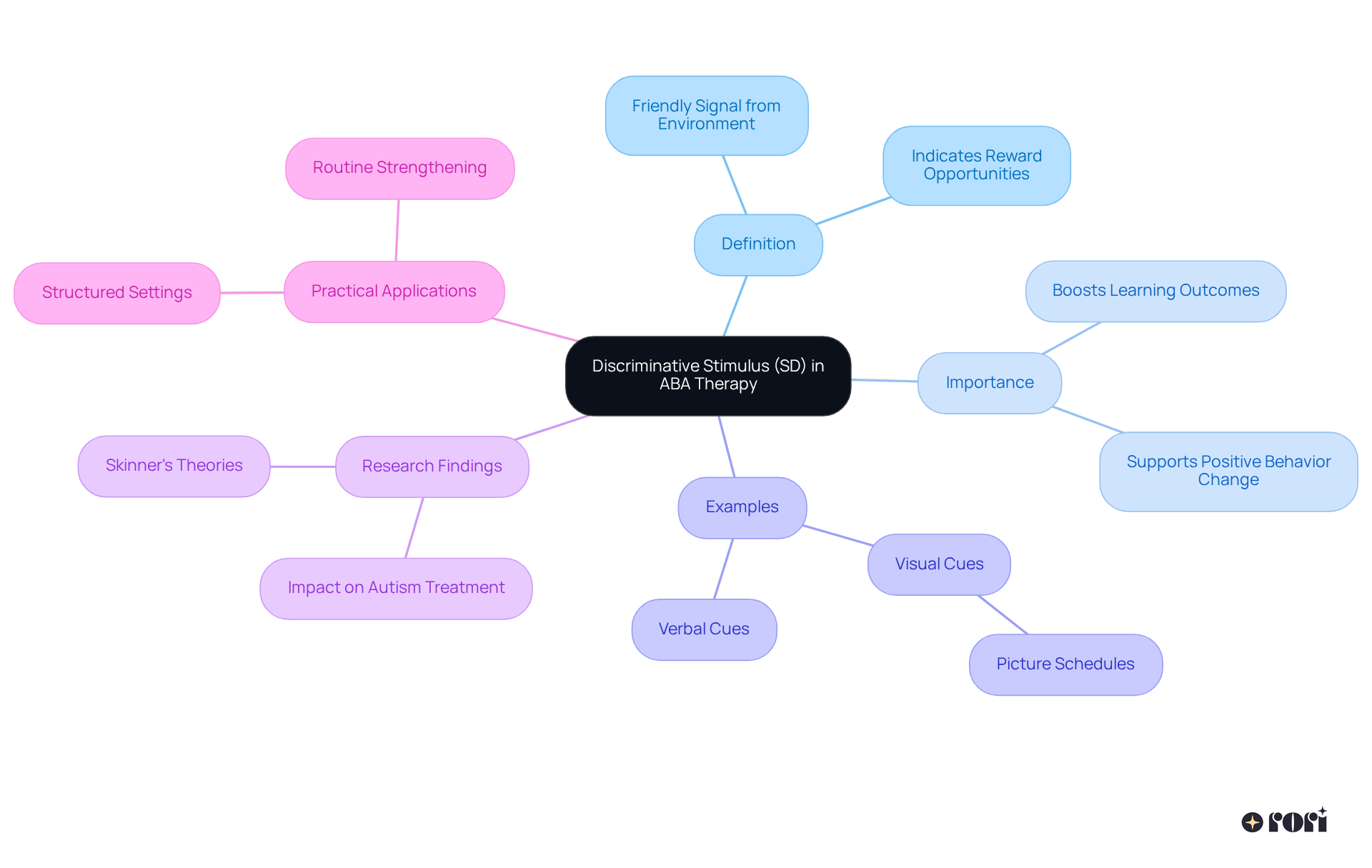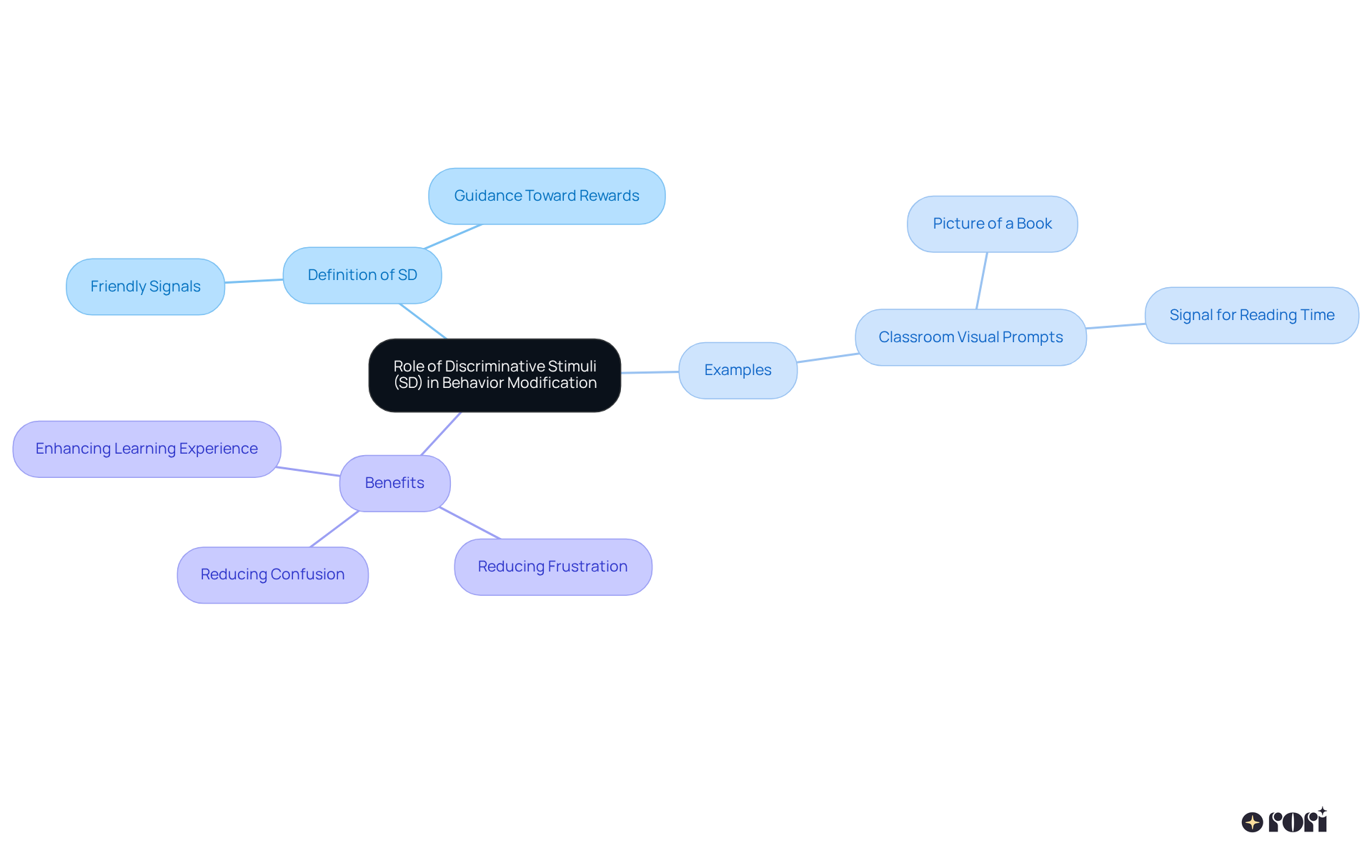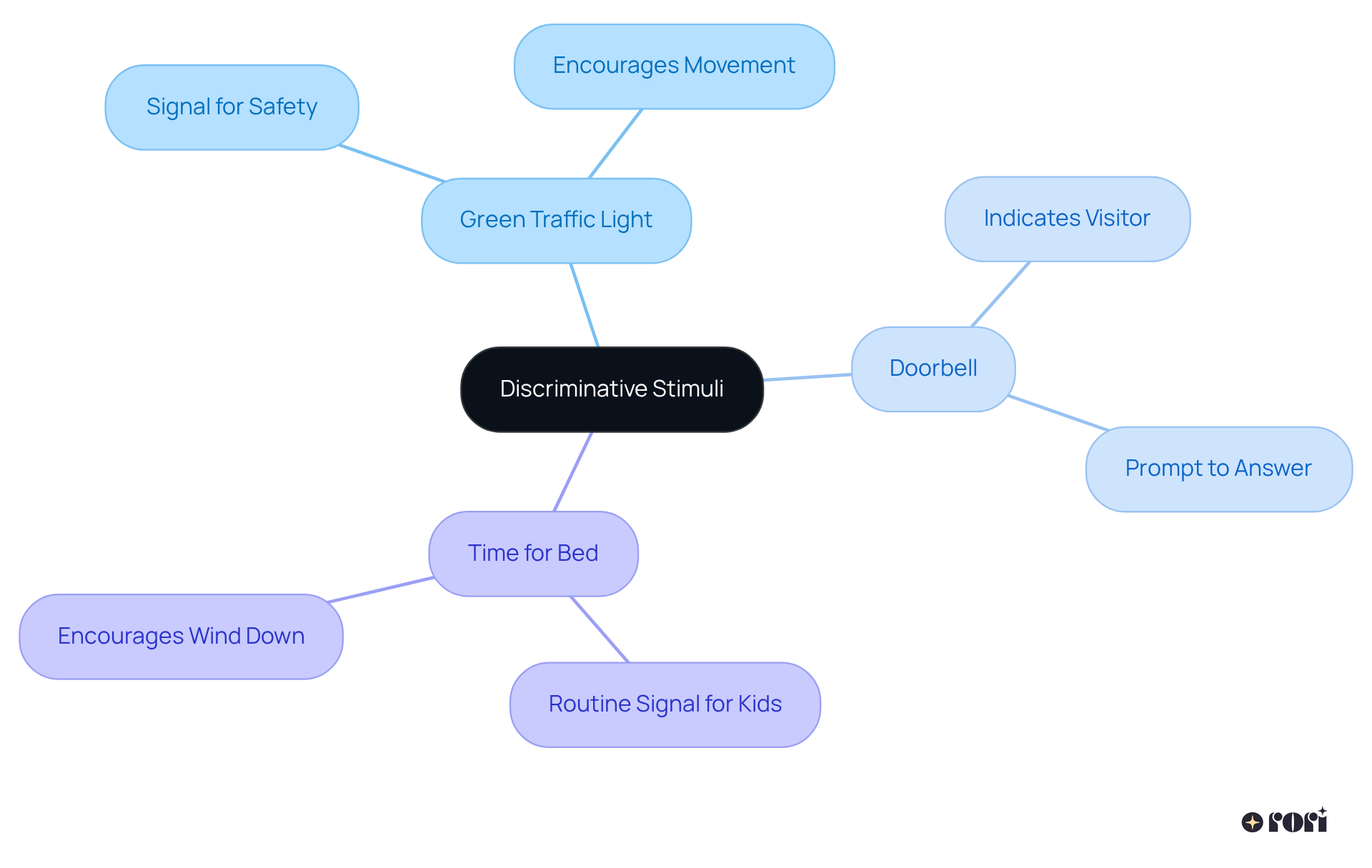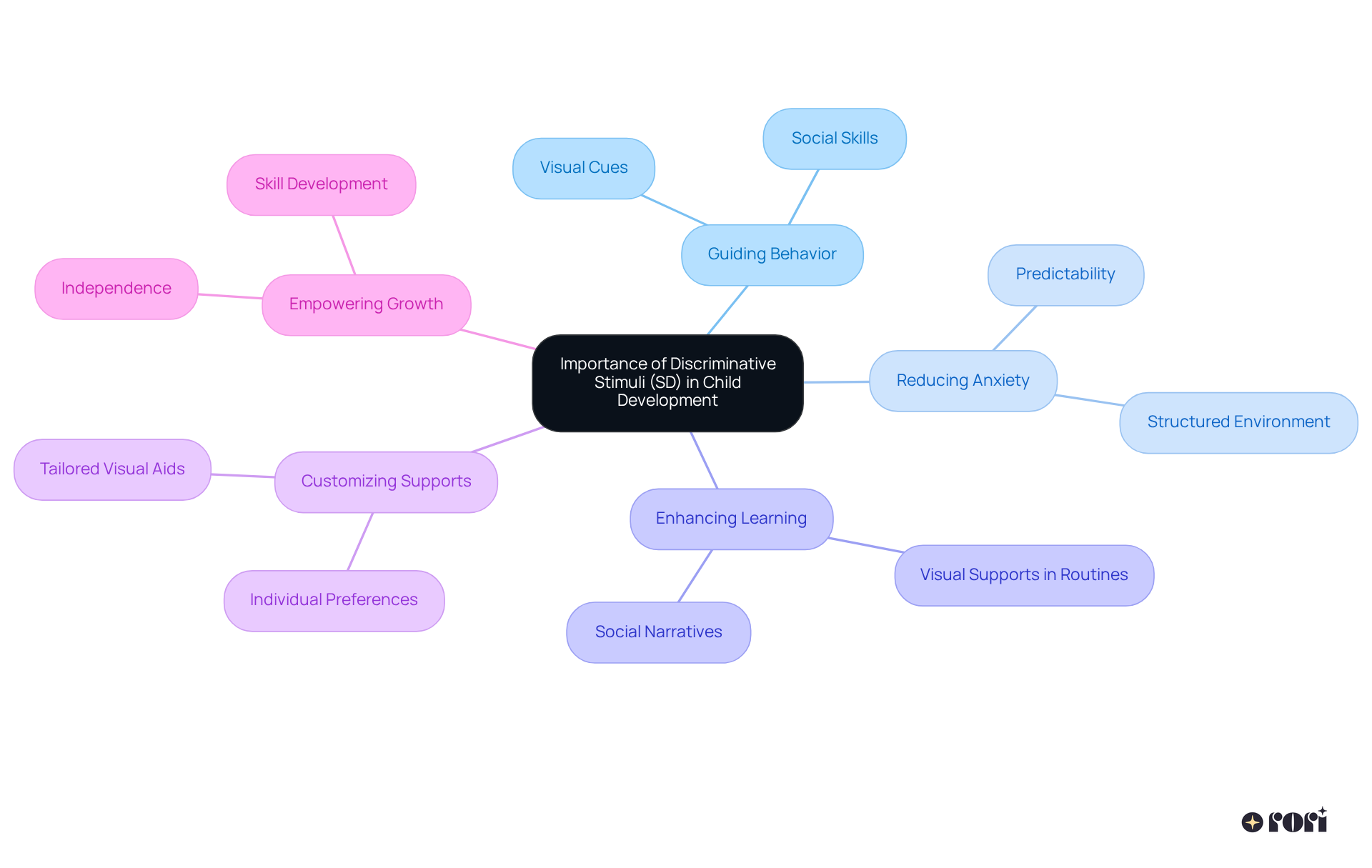This article dives into the meaning of Discriminative Stimulus (SD) within the realm of Applied Behavior Analysis (ABA) therapy. It highlights how crucial SDs are in guiding behavior and supporting child development. Think of SDs as helpful environmental signals that let us know when certain actions can lead to rewards. By using clear and consistent SDs, we can really boost learning outcomes and social skills, especially for children with autism.
As parents, understanding SDs can feel overwhelming at times, but it’s all about creating those positive signals that can make a difference. Imagine a child learning to share a toy; when they see a parent smile or hear encouraging words, that's an SD in action! These little cues can lead to big changes in behavior. Let’s explore this together and see how we can make learning a fun experience for our kids!
Understanding the nuances of behavior is essential for parents navigating the complexities of child development, especially when it comes to Applied Behavior Analysis (ABA) therapy. At the heart of this approach is the concept of discriminative stimuli (SD), which serve as vital signals guiding children toward positive behaviors and rewards. But how can caregivers effectively use these signals to foster learning and independence in their children? Let’s explore this together!
This article dives into the key concepts surrounding SD meaning in ABA therapy. We’ll provide insights and practical examples that empower you to support your child's growth in a meaningful way. By understanding these concepts, you can create an environment that nurtures learning and encourages your child to thrive. We’re here to help you every step of the way!
In Applied Behavior Analysis (ABA) therapy, a discriminative stimulus (SD) is like a friendly signal from the environment that lets someone know when they can earn a reward for doing something specific. It’s as if it’s saying, "If you do this, good things are likely to happen!" For example, when a bell rings, it might mean snack time for a child, encouraging them to come to the table. By understanding the SD meaning RBT—and what it isn’t—caregivers and therapists can really support learners in a positive way.
ABA therapy is a fascinating method for understanding and changing behaviors, focusing on what we can see and how it connects to our surroundings. The role of discriminative stimuli in analyzing behaviors is super important! Research shows that clear and consistent SDs, or SD meaning RBT, can boost learning outcomes, helping individuals see the link between their actions and the consequences that follow. Imagine a little one realizing that saying 'please' gets them a treat; that SD helps them practice polite communication.
B.F. Skinner, often called the Father of Applied Behavior Analysis, highlighted how crucial it is to understand the environmental factors that influence behaviors for effective interventions. By using SDs, therapists can create structured settings that promote positive behaviors, which aligns with SD meaning RBT, leading to improved social skills and independence for individuals with autism.
In real life, using SDs in autism treatment can look like employing visual cues, such as picture schedules, to indicate when it's time to switch activities. This not only helps children anticipate changes but also strengthens their ability to stick to routines, making their day-to-day life smoother. By weaving these strategies into daily routines, caregivers and therapists can create nurturing environments that foster learning and growth. Let’s explore this together!

The role of discriminative stimuli in shaping our actions is super important! Think of SDs, which align with sd meaning rbt, as friendly signals that guide us toward the right choices by indicating when a particular action will lead to a reward. For example, picture a classroom where a teacher uses a visual prompt, like a picture of a book, to signal that it's reading time. This simple cue helps students know what's expected of them and encourages them to dive into the reading adventure.
By providing clear and consistent signals, SDs help clarify the sd meaning rbt, thereby reducing confusion and frustration. This makes the learning process not only smoother but also more enjoyable! So, let’s explore this together and see how these signals can make a difference in our daily lives!

Real-life examples of discriminative stimuli can be found in our everyday lives. For instance, think about a green traffic light—it's like a friendly nudge for drivers, signaling that it's safe to roll through the intersection. Similarly, when that doorbell rings, it’s a little reminder that someone is at the door, prompting us to answer.
In the parenting world, a simple phrase like 'time for bed' can act as a signal for kids, letting them know it’s time to wind down and prepare for sleep. These examples really show how these signals, or SDs, guide our actions and strengthen learning, demonstrating the sd meaning rbt in both structured environments and the chaos of daily life.
Let’s explore this together! How have you noticed these signals at play in your own life? We’re here to help you every step of the way!

Discriminative stimuli (SDs) play a crucial role in development, especially when it comes to guiding behavior with clear signals that help young ones navigate towards appropriate actions. Research shows that adding visual supports into daily routines not only promotes independence but also lessens the need for verbal prompts. For instance, visual cues can help children understand when it’s time to share toys or ask for help, which can really boost their social skills and interactions.
As Ruben Kesherim wisely points out, "Visual supports help to create predictability and structure in the environment, which can reduce anxiety and overload for individuals with autism." This organized approach not only enhances learning but also fosters a sense of safety and predictability, which is especially important for those on the autism spectrum. Case studies have shown that using social narratives and visual timetables can effectively assist children in handling social situations and understanding daily routines.
Plus, customizing visual aids to fit each child’s unique preferences and abilities makes them even more effective. Ultimately, the thoughtful use of SD meaning RBT is key to supporting a child’s overall growth and well-being, empowering them to flourish in various settings. Let’s explore this together and see how we can make a difference!

Understanding the significance of discriminative stimuli (SD) in Applied Behavior Analysis (ABA) therapy is so important for parents and caregivers! These stimuli act as vital signals in our environment, letting us know when a specific behavior will be rewarded. This is especially helpful for children with autism, guiding them to navigate their actions more effectively. By grasping what SD means for RBTs, caregivers can create supportive environments that truly enhance learning and promote positive behaviors.
The article highlights how crucial SDs are in behavior modification, emphasizing their role in shaping actions through clear and consistent cues. Think about it: just like traffic lights or bedtime reminders, these signals influence our daily behaviors and learning experiences. Plus, integrating visual supports in child development can foster independence, reduce anxiety, and improve social interactions. It’s amazing to see the multifaceted benefits of utilizing SDs in various settings!
Ultimately, recognizing and implementing discriminative stimuli can significantly impact a child's growth and learning journey. By actively engaging with these concepts, parents and caregivers can empower their children to thrive, paving the way for enhanced social skills and greater independence. Embracing the principles of SD in everyday life not only enriches the learning experience but also cultivates a nurturing atmosphere where children can flourish. Let’s explore this together, and remember, we’re here to help you every step of the way!
What is a discriminative stimulus (SD) in ABA therapy?
A discriminative stimulus (SD) in ABA therapy is a signal from the environment that indicates when a person can earn a reward for a specific behavior. It suggests that performing a certain action will likely lead to positive outcomes.
How do discriminative stimuli enhance learning outcomes?
Clear and consistent discriminative stimuli help individuals understand the connection between their actions and the consequences that follow, thereby boosting learning outcomes.
Who is B.F. Skinner and what is his relevance to ABA therapy?
B.F. Skinner, known as the Father of Applied Behavior Analysis, emphasized the importance of understanding environmental factors that influence behaviors for effective interventions in ABA therapy.
How can discriminative stimuli be applied in autism treatment?
Discriminative stimuli can be applied in autism treatment by using visual cues, such as picture schedules, to indicate when it's time to switch activities, helping children anticipate changes and stick to routines.
What are some benefits of using discriminative stimuli in therapy?
Using discriminative stimuli can promote positive behaviors, improve social skills, and enhance independence for individuals with autism, creating a nurturing environment for learning and growth.